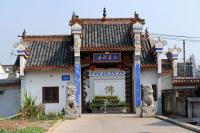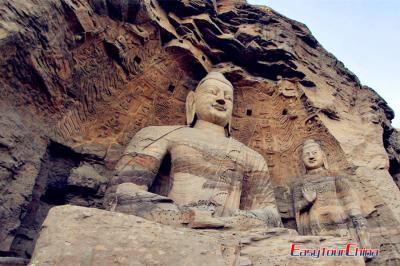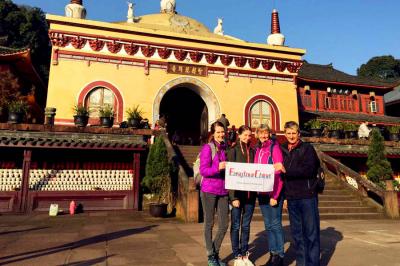Mount Hengshan
 Located in Hunyuan Country, about 62 km south of the Datong Datong City of Shanxi Province in Northern China, Mt. Hengshan is also known as the Northern Hengshan in case of being confused with the Southern Hengshan in Hunan Province. It is one of the five mythical mountains (Wu Yue) of China (the others are Mt. Taishan in Shandong Province; Mt. Huashan in Shaanxi Province; Mt. Hengshan in Hunan Province and Mt. Songshan in Henan Province), known as North Mountain (Bei Yue).
Located in Hunyuan Country, about 62 km south of the Datong Datong City of Shanxi Province in Northern China, Mt. Hengshan is also known as the Northern Hengshan in case of being confused with the Southern Hengshan in Hunan Province. It is one of the five mythical mountains (Wu Yue) of China (the others are Mt. Taishan in Shandong Province; Mt. Huashan in Shaanxi Province; Mt. Hengshan in Hunan Province and Mt. Songshan in Henan Province), known as North Mountain (Bei Yue). The honored name was bestowed by Emperor Shun (circa 2372 BC), who was so impressed by the sight of Mt. Hengshan when he toured his northern domain years ago. Since then, numerous emperors had come to visit Mt. Hengshan and the world-renowned traveler Xu Xiake also came to visit in Ming Dynasty (1368-1644) and left behind inspired writings. At ancient time, it was regarded as a holy mountain where kings and emperors came to worship their ancestors.
Of the five mythical mountains of China, Mt. Hengshan is unique for its precipitous ridges, lofty peaks, exotic-shaped temples and gushing fountains, together with forests of ancient trees, which make up a beautiful wild landscape. Mt. Hengshan consists of 108 peaks, among which the highest one is the Tianfeng Peak, reaching a height of 2,017m.
The most famous Taoist temples in Hengshan is the Overhanging Temple, which was built in Northern Wei Dynasty (386-534). Located at the mountain's foot, the Overhanging Temple was one of the most attractive spectacles in Mt. Hengshan for it is a wooden temple clinging to the cliff. It apparently defies gravity with only a few wooden pillars as support. However, it is quite safe as 40 wooden halls and structures in the temple are connected by a complex system of columns, posts and roads.


